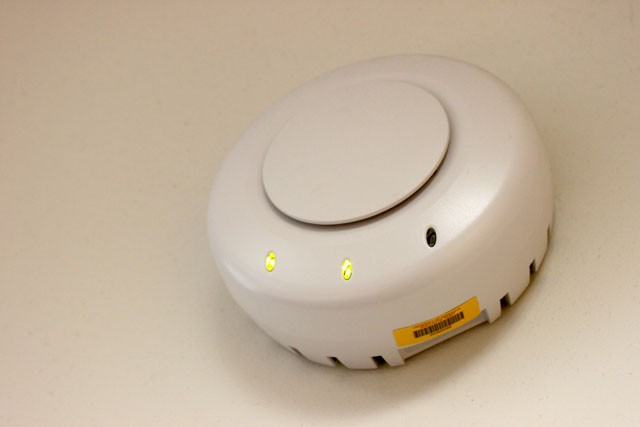Between classes, Roung Lee can be found surfing the Internet on his laptop in Coffman Union âÄî or at least trying to.
âÄúItâÄôs spotty at times,âÄù the first-year liberal arts student said.
The University of MinnesotaâÄôs Office of Information Technology is in the second year of a project to improve wireless Internet coverage across campus for students like Lee.
Right now, only 14 percent of buildings across campus are currently considered to have full wireless coverage.
âÄúWeâÄôre working on expanding wireless on a daily basis,âÄù said Louis Hammond, manager of network and telecommunication services at OIT.
The University currently has 3,600 wireless Internet access points across campus, and OIT plans to increase that number to 9,500.
The long-term project, which started last year with an overhaul of the previous wireless system, is predicted to last another four to five years and cost up to $8.9 million, according to Hammond.
In 2009, the University implemented a standard that consolidated all the wireless access points across campus.
âÄú[Before] everybody had their own router,âÄù Hammond said. âÄúThere was no system to it âÄî they were just access points that were providing network access.âÄù
Now, the entire University is under the 802.11n standard for carrying out wireless communication. Created by the international Institute of Electrical and Electronics Engineers, the standard includes a range of radio frequencies that allow for most computers to access the Internet wirelessly.
Funding for the project is the primary obstacle, Hammond said. OIT will be working closely alongside the Office of Classroom Management, the Carlson School of Management and the UniversityâÄôs Law School, in addition to several other IT directors to fund the remainder of the project.
âÄúWhat money we can get, we donâÄôt know,âÄù Hammond said. âÄúBudgets are very tight right now.âÄù
OIT has a list of priority buildings they are working from right now. Learning spaces, including libraries and common spaces, are highest on the list.
âÄúItâÄôs going slow because we only have so many resources to do it,âÄù Hammond said. âÄúIt takes quite a bit to plan coverage in a building appropriately.âÄù
Each installed access point costs around $1,500 and can provide coverage to approximately 4,000 square feet.
âÄúOur goal is to get 100 percent coverage, not just indoors, but outdoors as well,âÄù Hammond said, but he said that defining full coverage is difficult.
Many factors may disrupt the coverage, such as the thickness of walls and the number of people using a particular access point, University computer science professor Abhishek Chandra said.
He believes itâÄôs reasonable to eventually have 100 percent coverage both indoors and outdoors.
Chandra, whose office is located in Keller Hall, estimates that it would take around four to five access points per floor in Keller Hall to achieve full coverage.
Lee, who relies on the wireless coverage, predicts that he can actually connect to the Internet around 90 percent of the time in Coffman but is less successful in other buildings.
âÄúIâÄôm pretty lucky to be in one of those buildings [that is covered]âÄù he said.
OIT seeks to improve U’s Wi-Fi coverage
The project could take five years and cost $8.9 million.

A new University of Minnesota Wi-Fi antennae located in Murphy Hall.
Published October 27, 2010










